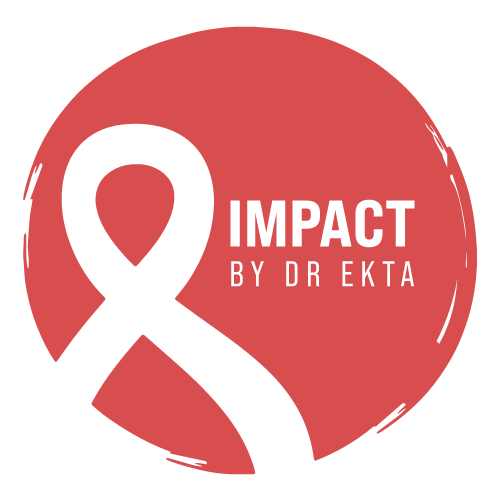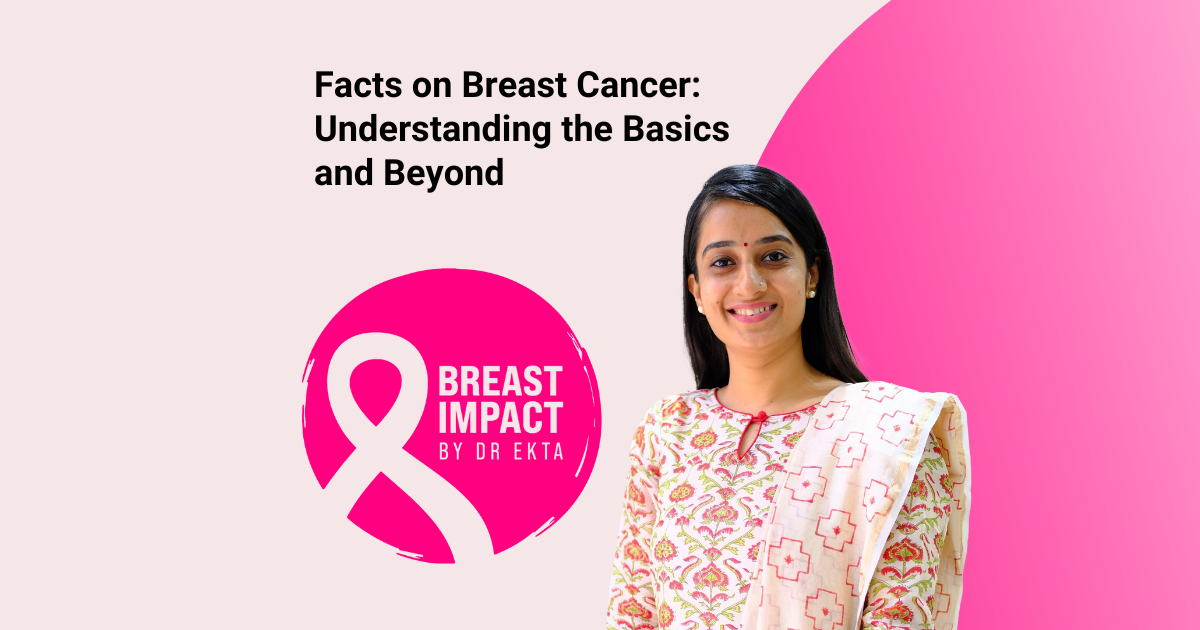As an oncologist with years of experience in treating patients with breast cancer, I have witnessed firsthand the profound impact this disease can have on individuals and their families. Breast cancer is not just a medical condition; it is a journey that involves physical, emotional, and psychological challenges. Understanding the basic facts on breast cancer is crucial for early detection, effective treatment, and better outcomes.
In this comprehensive guide, I aim to provide clear and concise information about breast cancer, encompassing its risk factors, symptoms, diagnostic methods, treatment options, and recent advancements in research.
Understanding Breast Cancer
Breast cancer originates in the cells of the breast, typically in the ducts (tubes that carry milk to the nipple) and lobules (glands that produce milk). It’s crucial to understand the basic facts on breast cancer, such as its development and the distinction between benign and malignant tumors. Benign tumors are non-cancerous and do not spread, while malignant tumors are cancerous and can invade surrounding tissues or spread to other parts of the body (metastasize).
Facts on Breast Cancer: Risk Factors for Breast Cancer
Several risk factors can increase the likelihood of developing breast cancer. Some of these are within an individual’s control, while others are not. Here are the key facts on breast cancer risk factors:
- Gender and Age: Being female is the most significant risk factor, and the risk increases with age.
- Family History and Genetics: A family history of breast cancer can elevate risk, particularly if a close relative (mother, sister, or daughter) has had the disease. Genetic mutations, such as BRCA1 and BRCA2, also play a significant role.
- Hormonal Factors: Early menstruation (before age 12), late menopause (after age 55), and having no children or having the first child after age 30 can increase risk.
- Lifestyle Factors: Obesity, alcohol consumption, and lack of physical activity are linked to higher risk.
- Previous Breast Conditions: A history of breast cancer or certain non-cancerous breast diseases can increase risk.
Symptoms of Breast Cancer
Recognizing the symptoms is crucial for early detection. Here are some important facts on breast cancer symptoms:
- Lump in the Breast or Armpit: The most common symptom is a new lump or mass. It’s important to note that not all lumps are cancerous, but they should be evaluated by a healthcare professional.
- Changes in Breast Shape or Size: Any unusual changes in the size or shape of the breast should be checked.
- Skin Changes: Dimpling, puckering, redness, or scaliness of the breast skin are potential signs.
- Nipple Changes: Inversion, discharge (especially if bloody), or pain in the nipple area can indicate breast cancer.
- Pain: Persistent pain in the breast or nipple area, not associated with the menstrual cycle, should be investigated.
Diagnostic Methods
Understanding the diagnostic process is part of grasping the facts on breast cancer. Early detection greatly improves treatment outcomes. Here are the primary diagnostic methods:
- Mammography: A mammogram is an X-ray of the breast, commonly used for screening and early detection.
- Ultrasound: This imaging technique uses sound waves to produce pictures of the inside of the breast.
- Magnetic Resonance Imaging (MRI): MRI provides detailed images of breast tissue and is often used for high-risk patients.
- Biopsy: A biopsy involves removing a sample of breast tissue for laboratory testing to determine if cancer cells are present.
Stages of Breast Cancer
The stage of breast cancer indicates the extent of the disease and helps guide treatment. Here are the key facts on breast cancer staging:
- Stage 0: Also known as carcinoma in situ, this stage indicates non-invasive cancer where abnormal cells are confined to the ducts or lobules.
- Stage I: Early-stage invasive cancer where the tumor is small and has not spread to lymph nodes.
- Stage II: The tumor is larger and/or has spread to nearby lymph nodes.
- Stage III: More extensive cancer that has spread to several lymph nodes and possibly nearby tissues.
- Stage IV: Metastatic cancer that has spread to distant organs, such as bones, liver, or lungs.
Treatment Options
Treatment for breast cancer depends on the stage and type of cancer. Here are the primary facts on breast cancer treatment options:
- Surgery: Surgical options include lumpectomy (removal of the tumor and a small margin of surrounding tissue) and mastectomy (removal of one or both breasts).
- Radiation Therapy: This treatment uses high-energy rays to target and destroy cancer cells.
- Chemotherapy: Chemotherapy involves using drugs to kill or slow the growth of cancer cells.
- Hormonal Therapy: Hormonal therapy blocks hormones that fuel certain types of breast cancer, particularly those that are estrogen-receptor-positive.
- Targeted Therapy: This treatment uses drugs to target specific molecules involved in cancer growth and spread.
- Immunotherapy: Immunotherapy helps the immune system recognize and attack cancer cells.
Advancements in Breast Cancer Research
Staying updated on the latest research is vital for understanding the evolving facts on breast cancer. Significant advancements have been made in recent years, including:
- Genetic Testing: Enhanced genetic testing helps identify individuals at high risk and informs personalized treatment plans.
- Precision Medicine: Tailoring treatments based on genetic, environmental, and lifestyle factors improves outcomes.
- Immunotherapy: Research into immunotherapy is providing new hope for treating advanced breast cancer.
- Liquid Biopsies: These blood tests detect cancer DNA, offering a non-invasive way to monitor disease progression and response to treatment.
- Artificial Intelligence (AI): AI is being used to improve the accuracy of imaging techniques and predict treatment responses.
Prevention and Early Detection
Understanding prevention and early detection is crucial among the facts on breast cancer. Here are some strategies to reduce risk and promote early detection:
- Regular Screening: Routine mammograms and clinical breast exams are essential for early detection.
- Healthy Lifestyle: Maintaining a healthy weight, limiting alcohol intake, staying physically active, and eating a balanced diet can reduce risk.
- Breast Self-Exams: Performing regular self-exams helps individuals become familiar with their breasts and notice any changes.
- Genetic Counseling: For those with a family history of breast cancer, genetic counseling can provide insights into personal risk and guide preventive measures.
Support and Resources
Living with breast cancer or supporting someone who is can be challenging. Here are some key facts on breast cancer support and resources:
- Support Groups: Joining a support group provides emotional support and practical advice from others who understand the journey.
- Professional Counseling: Counseling can help manage the emotional impact of a breast cancer diagnosis.
- Educational Resources: Organizations like the American Cancer Society and Breastcancer.org offer valuable information and resources.
- Financial Assistance: Various programs and organizations provide financial aid to help cover treatment costs.
Conclusion
Understanding the facts on breast cancer is vital for prevention, early detection, and effective treatment. By staying informed about risk factors, symptoms, diagnostic methods, treatment options, and advancements in research, individuals can take proactive steps to protect their health and support others facing this disease. As research continues to evolve, staying updated on the latest facts on breast cancer will empower us all to make informed decisions and foster a supportive community for those affected by breast cancer.

